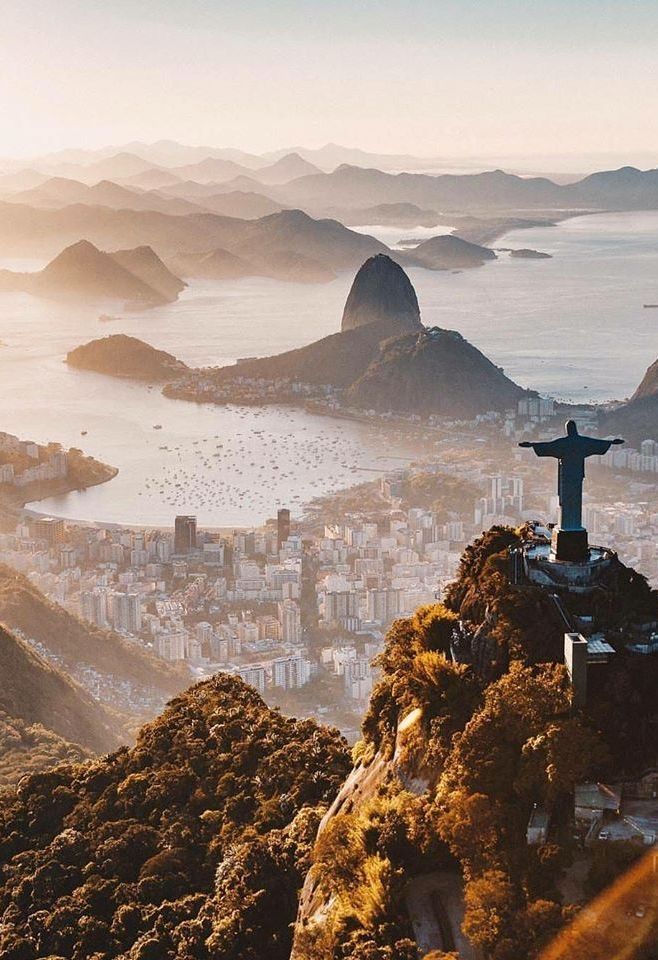Rio de Janeiro, Brazil: The Vibrant Heartbeat of Latin America
Rio de Janeiro, often simply called Rio, is a city that pulses with energy, life, and culture. Located along the southeastern coast of Brazil, Rio is famous for its golden beaches, towering mountains, vibrant festivals, and iconic landmarks. Known worldwide for its Carnaval, the towering Christ the Redeemer statue, and its rich cultural heritage, Rio de Janeiro is one of the most celebrated cities in the world. It draws millions of visitors each year, all eager to experience its stunning natural beauty and lively atmosphere. Let’s dive into the history, daily life, and significance of Rio de Janeiro, and explore how it continues to impact society and captivate those who visit.
A Glimpse into the History of Rio de Janeiro
The history of Rio de Janeiro dates back to its founding in 1565 by the Portuguese. Originally established as a fortified city, it soon became a thriving port and center of trade. During the colonial period, the city was at the heart of Brazil’s sugar production and later became a key player in the transatlantic slave trade.
In the 19th century, Rio became the capital of Brazil and underwent rapid urbanization. The city experienced immense growth with the rise of coffee exports and the development of infrastructure. In the 20th century, Rio de Janeiro grew into a global cultural hub, known for its music, dance, and festivals. Today, Rio is not only a major economic and cultural center in Brazil but also a symbol of Brazilian identity.
Daily Life and Impacts in Rio de Janeiro
Rio de Janeiro is a city where daily life is shaped by both the beauty of its natural environment and the challenges of urban living. The city is a unique blend of modernity and tradition, where skyscrapers coexist with favelas (slums), and luxury resorts sit alongside bustling street markets.
For residents, daily life in Rio revolves around family, work, and community. Many Cariocas (the term for Rio’s residents) begin their day early, enjoying breakfast with a cup of strong coffee or açai bowls before heading to their jobs. The city’s workforce is diverse, with many working in sectors such as tourism, hospitality, entertainment, and services. Rio is also home to many universities and cultural institutions, making it an educational hub for the country.
Rio’s beaches, such as Copacabana and Ipanema, are central to daily life, especially for those living near the coast. Residents often spend time outdoors, whether it’s relaxing on the beach, playing sports like volleyball or soccer, or strolling along the famous boardwalks. The cultural significance of the beach cannot be overstated in Rio; it’s not just a place for recreation but also a key part of the social fabric.
However, life in Rio also faces challenges, especially when it comes to issues such as poverty, crime, and inequality. The favelas, which house a significant portion of the population, are often characterized by overcrowding, inadequate infrastructure, and limited access to public services. Despite these challenges, Rio remains a resilient city, with a vibrant culture that unites people from all walks of life.
Significance of Rio de Janeiro
Cultural Significance: Rio de Janeiro is the cultural heartbeat of Brazil. The city is renowned for its music, particularly Samba, Bossa Nova, and Funk Carioca, which shape the rhythms of Rio’s daily life. The annual Carnaval, held before Lent, is the world’s largest carnival and a symbol of Brazilian culture. This massive celebration brings together millions of people to dance, sing, and celebrate life in the streets, parades, and samba schools.
The city is also a center for visual arts, theater, and film, with many museums, galleries, and theaters showcasing Brazilian and international works. Rio’s diverse neighborhoods are home to unique cultural influences from indigenous, African, and European communities, all of which contribute to the city’s rich cultural tapestry.
Historical Significance: Rio de Janeiro’s history is marked by its role in the shaping of Brazil as a nation. As the capital of Brazil for nearly two centuries, it played a central role in the country’s political and economic development. The city’s colonial history, its role in the slave trade, and its transition into a modern metropolis all add layers of complexity to its significance. Rio remains a key symbol of Brazil’s journey from colonial past to modern identity.
Economic Significance: As one of Brazil’s largest cities, Rio de Janeiro is a major economic hub in Latin America. The city has a thriving tourism industry, with visitors flocking to its beaches, landmarks, and cultural festivals. Rio is also an important center for oil production, finance, and technology, with a growing tech sector and major multinational corporations setting up offices in the city. Its port is one of the busiest in the country, and the city is a key player in global trade.
Environmental Significance: Rio de Janeiro is home to some of the world’s most breathtaking natural landscapes, including the Sugarloaf Mountain, Tijuca National Park, and the nearby beaches. The city’s preservation of these areas is crucial for maintaining biodiversity and providing residents with access to green spaces. Efforts to protect Rio’s environmental resources are increasingly important as the city faces the challenges of urbanization and climate change.
Fun Facts About Rio de Janeiro
- Christ the Redeemer: One of the most iconic landmarks in the world, the Christ the Redeemer statue on Corcovado Mountain stands 98 feet tall and overlooks the city. It is considered one of the Seven New Wonders of the World.
- Carnaval: Rio’s Carnaval is a globally recognized festival, attracting over 2 million people every day during the event. The samba parades, street parties, and elaborate costumes create an atmosphere of excitement and celebration.
- Beaches and Sun: Rio is known for its world-famous beaches, including Copacabana, Ipanema, and Barra da Tijuca. The beaches are not just places to relax but also hubs of social life and activities like volleyball, surfing, and beach football.
- The Maracanã Stadium: One of the largest stadiums in the world, Maracanã has hosted two FIFA World Cup finals and numerous other sporting events. It is a symbol of Brazil’s deep passion for football (soccer).
- The Lapa Arches: The Arcos da Lapa is a historic aqueduct that was built in the 18th century. Today, it serves as a bridge for trams and is a popular spot for nightlife, with samba clubs and street parties.
FAQs About Rio de Janeiro
Q: What is the best time to visit Rio de Janeiro?
A: The best time to visit Rio is during the dry season, from December to March, when the weather is warm and ideal for beach activities and sightseeing. However, if you want to experience the Carnaval, you should plan to visit in February.
Q: How do I get around Rio de Janeiro?
A: Rio has a well-developed transportation system, including buses, metro, and taxis. The metro is one of the fastest ways to get around the city, while buses are more affordable but can be crowded. Many visitors also use ride-sharing apps like Uber.
Q: Is Rio de Janeiro safe for tourists?
A: While Rio is generally safe for tourists, it is important to take precautions, especially in certain areas. Visitors should avoid walking alone at night in less populated areas and always be mindful of their belongings.
Conclusion: Rio de Janeiro’s Unmatched Charm and Impact
Rio de Janeiro is more than just a city—it’s a vibrant celebration of life, culture, and resilience. From the breathtaking views of Sugarloaf Mountain to the rhythm of samba echoing through its streets, Rio captures the essence of Brazil’s spirit. Despite its challenges, the city’s enduring beauty and vibrant culture continue to make it one of the most beloved destinations in the world.
Wishing You an Amazing Experience in Rio de Janeiro: Whether you’re lounging on the beach, exploring the historic landmarks, or dancing at Carnaval, Rio de Janeiro is a city that will leave you inspired and in awe of its energy and warmth.










